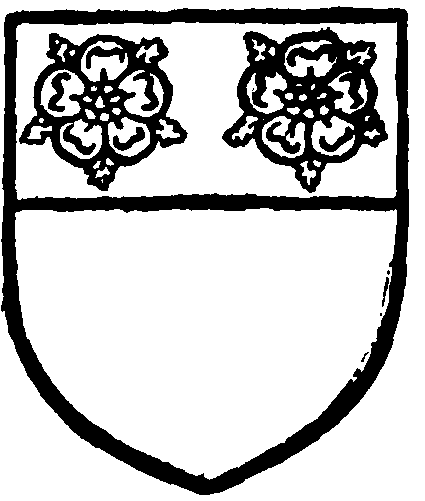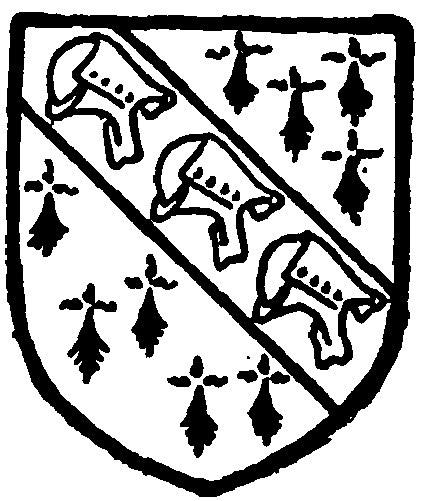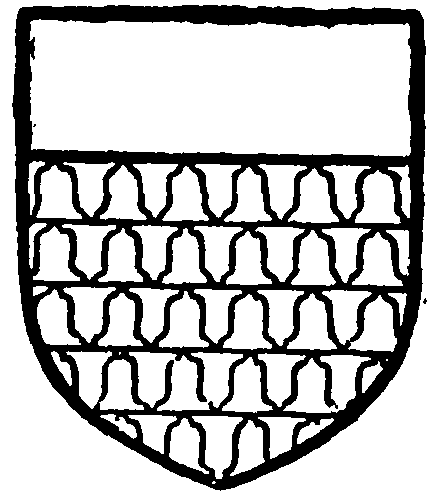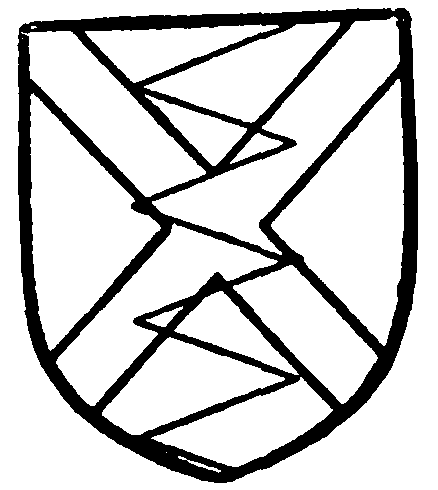A History of the County of Hampshire: Volume 4. Originally published by Victoria County History, London, 1911.
This free content was digitised by double rekeying. All rights reserved.
'Parishes: Colemore', in A History of the County of Hampshire: Volume 4, ed. William Page (London, 1911), British History Online https://www.british-history.ac.uk/vch/hants/vol4/pp423-425 [accessed 3 May 2025].
'Parishes: Colemore', in A History of the County of Hampshire: Volume 4. Edited by William Page (London, 1911), British History Online, accessed May 3, 2025, https://www.british-history.ac.uk/vch/hants/vol4/pp423-425.
"Parishes: Colemore". A History of the County of Hampshire: Volume 4. Ed. William Page (London, 1911), British History Online. Web. 3 May 2025. https://www.british-history.ac.uk/vch/hants/vol4/pp423-425.
In this section
COLEMORE
Colemere (xi cent.); Colemeare, Cormere (xiv cent.); Colemore (xviii cent.).
The parish of Colemore or Colmer contains 1,472 acres of land; though less picturesque than the neighbouring parish of Priors Dean, it is in the midst of well-wooded and undulating country. There are 779 acres of arable land, 558¼ under permanent grass and 31 acres of woodland. (fn. 1) Colemore village lies in the north-east part of the parish. John Greaves, the celebrated mathematician, was born at Colemore Rectory in 1602. He was appointed sub-warden of Merton College, Oxford, and ejected by the Parliamentary visitors in 1648, when he lost many of his books and manuscripts. Some of these were afterwards recovered for him by his friend Selden, but after his death they were dispersed; his astronomical instruments, however, were left to the Savilian Library, Oxford. John Greaves was the eldest son of the rector of Colemore, Rev. John Greaves, the tutor of George Wither, the poet, who wrote an affectionate epigram to him in 1613, and the father of three celebrated sons. Edward, the second son, studied medicine at Padua and Leyden, and was appointed Linacre Reader of Physic at Oxford in 1643; he is supposed to have been created a baronet by Charles I in 1646, and afterwards became physician in ordinary to Charles II. Thomas Greaves, the orientalist, was the youngest of the three; he became Fellow of Corpus Christi College, Oxford, in 1636, and deputy Reader of Arabic in 1637.
Richard Pococke, rector of Colemore from 1660 to 1719, was also the father of a distinguished man, Richard Pococke the traveller, who published descriptions of his travels in the East in 1743 and 1745.
A little to the south of the church is Colemore Farm, and close to the farm at the corner where Shell Lane meets the road is the Knap, which occurs in the 13th century as the Knappe (fn. 2); almost opposite is. a road which leads past Becksettle Farm (Bucsetle, Bikesettle, xiii cent.) (fn. 3) and across Colemore Common to the south-west. At the turn of the road into Colemore village beyond the Knap stands the school, and Hermitage (oc. xvi cent.) (fn. 4) is some distance away to the south. Field Farm is close to the boundary between Colemore and Priors Dean. Blountysmere (fn. 5) is another place-name occurring in the 13th century.
The soil is clay, the subsoil chalk. The chief crops are cereals.
Manors
The manor of COLEMORE 'with all its appurtenances except Dene' was granted in free alms to the priory of Southwick by John Count of Mortain, whose charter was confirmed by King Richard in 1198. (fn. 6) Other confirmations of the grant were made by Henry III (fn. 7) and by Edward II, (fn. 8) who also granted the prior and convent free warren in all their demesne lands in Dean and Colemore in 1320. (fn. 9)
The manor continued to belong to the priory until the Dissolution in 1538, (fn. 10) when it fell into the hands of the king, who granted it in 1539 to Anne of Cleves (fn. 11) and in 1541 to Katherine Howard. (fn. 12) In 1544 it was granted to Edward Elrington and Humphrey Metcalf, (fn. 13) who received licence to alienate it to Sir John Williams and Christopher Edmondes, (fn. 14) from whom Richard Compton obtained it the same year. (fn. 15)

Southwick Priory. Argent a chief sable with two roses argent therein.
The Compton family retained the estate until 1634, (fn. 16) when John the grandson of Richard Compton died, leaving as his heir his sister Elizabeth, who had married Sir Benjamin Tichborne.

Compton. Ermine a bend sable with three helms or thereon.

Tichborne. Vair a chief or.
On the death of their son Compton in 1657 the manor passed to the descendants of Sir Benjamin's brother Francis, whose great-grandson, Sir Henry Tichborne, bart., was the owner in 1689. (fn. 17) Edward, the grandson of Sir Henry Tichborne, in 1826 assumed the name of Doughty in pursuance of a direction contained in the will of his kinswoman Elizabeth Doughty of Snarford Hall; he held the manor of Colemore in 1831, and died in 1853, when he was succeeded by his brother, Sir James Francis, (fn. 18) whose great-grandson, Sir Joseph Henry Bernard Doughty-Tichborne, bart., is the present owner. However, a large part of the Tichborne land, namely, 390 acres, was sold to Mr. George Arthur Jervoise Scott in 1876 and belongs now to his younger brother and heir, Mr. Archibald Edward Scott of Rotherfield Park. (fn. 19)
COLEMORE FARM—The only nntry concerning Colemore in Domesday Book is that which states that I hide of land there was held by Humfrey the Chamberlain. (fn. 20) This holding does not seem to have been included in the grant to Southwick Priory, for its tenants often styled themselves lords of the manor of Colemore, and had usually the patronage of the church. (fn. 21) The name Kernet first occurs about 1166, when Hugh de Kernet rendered account at the Exchequer of half a mark. (fn. 22) Hugh was still living in 1176, but he seems to have died before 1184, in which year Henry de Kernet and Isabel his wife paid 40s. for an assize against Michael de Versona. (fn. 23) Another Henry owned the estate in 1221, (fn. 24) and a 'William de Kernet lord of Colemore' was a witness to a grant of land to Southwick Priory in 1278. (fn. 25) The manor still belonged to the Kernets in 1299, when William, who was probably a son of the ' lord of Colemore,' held it from his brother John for the yearly rent of one rose, (fn. 26) but before 1339 the estate had passed to Thomas de Westcote, (fn. 27) whose descendants remained in possession and were patrons of the church till the beginning of the 16th century. (fn. 28) In 1522 ' the lands which formerly belonged to John Westcote' were held by Richard Norton of Colemore, who was also patron of the church, (fn. 29) and in 1536 Richard Norton of East Tisted died seised of the reversion of the manor of Colemore after the death of his namesake. (fn. 30) He was succeeded by his son and heir John, (fn. 31) who probably gave the estate to his daughter Margaret on her marriage with Thomas Uvedale of Wickham (co. Hants) in 1549. (fn. 32) Their daughter Ellen married Peter Bettesworth of Milland (co. Sussex), (fn. 33) whose father Thomas Bettesworth bought Colemore Farm from the Uvedales for £80. (fn. 34) Peter Bettesworth was knighted in 1608. He quarrelled with his son Thomas because of the 'wasteful expenses' and ' unnaturall and dysobediente disposycon ' of the latter, who had married, against his father's will, Bridget the daughter of Sir Richard Hyde near Abington before 1614, whose marriage portion was only £600 or £700. (fn. 35) Sir Peter afterwards granted to the young couple a twenty-one years' lease of Colemore Farm, (fn. 36) but he ultimately sold it to Robert Ball, (fn. 37) reserving a rent of which Bridget the 'widow of Thomas Bettesworth' was seised as jointure in 1637. (fn. 38) Robert Ball was succeeded by his nephew William in 1640. (fn. 39) At this time the farm was probably sold or leased to a John Palmer who lived at Colmer from 1668 to 1680. (fn. 40) Thus in 1728 John Palmer, probably a son of the former, sold it to Henry Read and others, and in 1742 it was bought by Sir John Peachey, bart., who in 1744 obtained an Act of Parliament to exchange the estate for land in West Dean (co. Sussex) which belonged to Thomas Knight of Chawton. (fn. 41) Edward Knight of Chawton was seised of Colemore Farm in 1815, (fn. 42) and sold it in 1824 to James Scott of Rotherfield Park, on whose death in 1835 Colemore passed to his son James Winter Scott, who died in 1873. Archibald Edward Scott, fourth but only surviving son of James Winter Scott, holds the estate at the present day. (fn. 43)

Scott of Rotherfield. Party indented argent and sable with a saltire countercoloured.
Church
The church of ST. PETER ADVINCULA has a chancel 16 ft. wide by 17 ft. 2 in., nave 15 ft. 6 in. by 43 ft., north transept 12 ft. 5 in. by 13 ft., and south porch. The walls are of flint rubble with sandstone dressings, 2 ft. 6 in. thick, and belong for the most part to the first half of the 12th century, the principal structural changes which have taken place being the rebuilding of the chancel in the 19th century and the destruction at some earlier date of a south transept balancing that on the north. A plan in the library of the Society of Antiquaries shows that the chancel before rebuilding was narrower than the nave, instead of a few inches wider as now, and was separated from it by a chancel arch. At the present time it has three trefoiled lancets in its east wall and two uncusped in the south, all of modern stonework, and in its north wall is a round-headed light, which also seems to be modern, and has beneath it and partly breaking into its sill a segmental arched recess in the wall, with a sunk four-centred panel in its east jamb. This is in part of old masonry, and to the west of the round-headed light is a plain lancet, through the west jamb of which passes a squint from the north transept.
At the west of the chancel is a screen with clumsy Gothic detail, the original parts of which, including the tracery of the central opening and the ovolomoulded head and rails, are probably of 17th-century date. The transept opens to the nave by a plain semicircular arch 6 ft. 6 in. wide, with a chamfered string at the springing, its centre being set considerably to the west of the centre line of the transept. The lower parts of the jambs of a similar arch are to be seen in the south wall of the nave in a corresponding position, marking the entrance to the destroyed south transept. The north transept is lighted from the east by a small round-headed light of original date, and from the south by a wide lancet set near the north-east angle, of uncertain date. In the west wall, at the north end, is set a blocked round-headed arch, as of a doorway, of which no traces are to be seen on the outer face of the wall. At the south-east angle of the transept is a round-headed piscina recess, and near it in the south wall part of a 15th-century stair to a now destroyed rood loft.
The nave has three modern three-light windows on the south and a plain pointed south doorway, which may be a late 13th-century insertion, while in the north wall is a small lancet window with an outer reveal for a frame, set high in the wall. It is of chalk ashlar, and probably of 13th-century date. The west window of the nave is modern, of two lights with a quatrefoil in the head. Over the west end of the nave is a wooden bell turret, and the west parts of the north and south wall of the nave are carried up in masonry higher than the rest of the wall, the floor of the bell-chamber being laid at a level with the tie-beams of the nave. The chancel roof is modern, but retains the wall plates of an older roof, while that of the nave is of plain 15th-century work, the only ornament being a four-leafed flower on the wall plates in the middle of each bay. It is plastered between the rafters, and covered externally with red tiles, like the rest of the building. The transept has an old roof with plain trussed rafters, but no detail to fix its date. In the transept are an old chest and a 17th-century altar table, and on the ladder leading to the bell-turret is cut r w 1694, the timbers of the turret being modern, though the bell frame it contains is old.
The font, near the south door of the nave, is of a late 12th-century type, of Purbeck marble, with a square bowl arcaded on two sides, and having a doublescalloped pattern on the west side and an interlacing pattern on the east. It has its original base and round central shaft, but the four angle shafts are modern. There are two bells, the treble c. 1500, with Roger Landon's marks of the lion's face and groat, and a third indistinct mark which is neither his cross nor founder's shield. The tenor, inscribed e k 1627, is the work of Ellis Knight.
The plate consists of a silver chalice of 1568, a paten of 1719, purchased in 1853, and a pewter flagon and two plated alms basins.
There are four books of registers; the first contains baptisms and burials from 1563 to 1762 and marriages from 1565 to 1754; the second, marriages from 1754 to 1812; the third, baptisms and burials from 1763 to 1812; the fourth (a transcript on parchment), baptisms and burials from 1800 to 1812.
Advowson
The patronage of Colemore Church seems to have belonged in early times to the owners of the independent hide of land. It was successfully claimed against the Abbot of Hyde in 1221 by Henry de Kernet, (fn. 44) whose family continued to exercise the right of presentation for the next hundred years. (fn. 45) When the manor passed to the Westcotes the advowson went with it; Thomas de Westcote presented to the living in 1346, (fn. 46) and left the right of presentation to his son Richard at his death in 1364. (fn. 47) Ten years later, however, the Abbot and convent of Waverley were the patrons, (fn. 48) and it was not until the time of Richard Fox, Bishop of Winchester, that the right of presentation again belonged to the owner of Colemore Farm. (fn. 49) John Norton presented to the living between 1530 and 1549, (fn. 50) in which year he sold the advowson to the Comptons. (fn. 51)
The owners of the large manor continued to be the patrons for nearly two hundred years. Sir Henry Joseph Tichborne, bart., presented to the living in 1719, (fn. 52) but in 1732 he sold the advowson to John Tarrant of Fordingbridge, (fn. 53) whose son and heir, Robert Thorpe Tarrant, sold it in 1758 to John Unwin, (fn. 54) from whom it was bought in 1762 by Thomas Harrison. (fn. 55) In 1767 the patron of the living was James Cookson, (fn. 56) who obtained a quitclaim of the advowson from Constance wife of William Webb and daughter of Thomas Harrison, in 1777. (fn. 57) The right of presentation belonged in 1835 (fn. 58) to Mr. Fowler and in 1853 to the Rev. Thomas Hervey, (fn. 59) to whose heir, the Rev. Alfred Cyril Hervey, it now belongs.